Category Archives: Machine Learning
Instance-based vs Model-based Learning: Differences
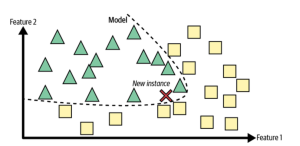
Machine learning is a field of artificial intelligence that deals with giving machines the ability to learn without being explicitly programmed. In this context, instance-based learning and model-based learning are two different approaches used to create machine learning models. While both approaches can be effective, they also have distinct differences that must be taken into account when building a machine learning system. Let’s explore the differences between these two types of machine learning. What is instance-based learning & how does it work? Instance-based learning (also known as memory-based learning or lazy learning) involves memorizing training data in order to make predictions about future data points. This approach doesn’t require any …
Data-Driven Decision Making: What, Why & How?
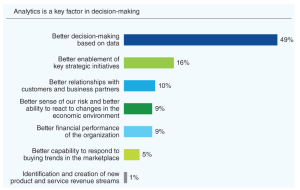
Data-driven decision-making is a data-driven approach to making decisions to achieve desired outcome. More precisely, data-driven decision making is an insights-driven approach to drive decisions and related actions. The data can come from internal and external data sources to avoid data biases. Data-driven decision-makers use data in their decision process to validate existing actions or take new actions (predictive or prescriptive analytics). They make decisions based on the actionable insights generated from the data. The goal is to make informed decisions while ensuring trust & transparency across the stakeholders & organization as a whole. It can be noted that data-driven decision making provides great thrust to digital transformation initiatives. In …
Different types of Clustering in Machine Learning
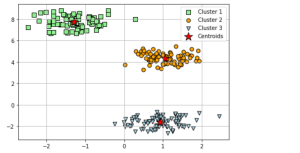
Clustering is a type of unsupervised machine learning technique that is used to group data points into distinct categories or clusters. It is one of the most widely used techniques in machine learning and can be used for various tasks such as grouping customers by their buying habits, creating groups of similar documents, or finding groups of related genes. In this blog post, we will explore different types / categories of clustering methods and discuss why they are so important in the field of machine learning. Prototype-based Clustering Prototype based clustering represents one of the categories of clustering algorithms that are used to identify groups within a larger dataset. This …
Python Pickle Example: What, Why, How

Have you ever heard of the term “Python Pickle“? If not, don’t feel bad—it can be a confusing concept. However, it is a powerful tool that all data scientists, Python programmers, and web application developers should understand. In this article, we’ll break down what exactly pickling is, why it’s so important, and how to use it in your projects. What is Python Pickle? In its simplest form, pickling is the process of converting any object into a byte stream (a sequence of bytes). This byte stream can then be transmitted over a network or stored in a file for later use. It’s like putting the object into an envelope and …
Free Datasets for Machine Learning & Deep Learning
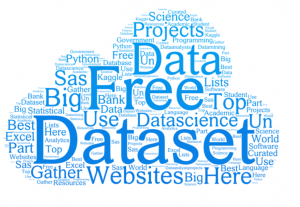
Are you looking for free / popular datasets to use for your machine learning or deep learning project? Look no further! In this blog post, we will provide an overview of some of the best free datasets available for machine learning and deep learning. These datasets can be used to train and evaluate your models, and many of them contain a wealth of valuable information that can be used to address a wide range of real-world problems. So, let’s dive in and take a look at some of the top free datasets for machine learning and deep learning! Here is the list of free data sets for machine learning & …
Challenges for Machine Learning / AI Projects

In this post, you will learn about some of the key challenges in relation to achieving successful AI / machine learning (ML) or Data science projects implementation in a consistent and sustained manner. As AI / ML project stakeholders including senior management stakeholders, data science architects, product managers, etc, you must get a good understanding of what would it take to successfully execute AI / ML projects and create value for the customers and the business. Whether you are building AI / ML products or enabling unique models for your clients in SaaS setup, you will come across most of these challenges. Understanding the Business Problem Many times, the nature …
Difference between Online & Batch Learning
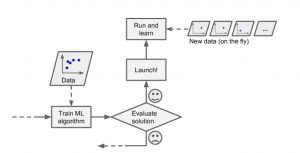
In this post, you will learn about the concepts and differences between online and batch or offline learning in relation to how machine learning models in production learn incrementally from the stream of incoming data or otherwise. It is one of the most important aspects of designing machine learning systems. Data science architects would require to get a good understanding of when to go for online learning and when to go for batch or offline learning. Why online learning vs batch or offline learning? Before we get into learning the concepts of batch and on-line or online learning, let’s understand why we need different types of models training or learning …
Most Common Machine Learning Tasks
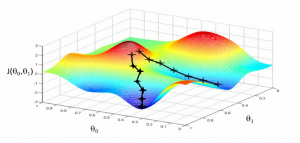
This article represents some of the most common machine learning tasks that one may come across while trying to solve machine learning problems. Also listed is a set of machine learning methods that could be used to resolve these tasks. Please feel free to comment/suggest if I missed mentioning one or more important points. Also, sorry for the typos. You might want to check out the post on what is machine learning?. Different aspects of machine learning concepts have been explained with the help of examples. Here is an excerpt from the page: Machine learning is about approximating mathematical functions (equations) representing real-world scenarios. These mathematical functions are also referred …
Moving Average Method for Time-series forecasting
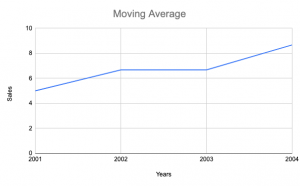
In this post, you will learn about the concepts of the moving average method in relation to time-series forecasting. You will get to learn Python examples in relation to training a moving average machine learning model. The following are some of the topics which will get covered in this post: What is the moving average method? Why use the moving average method? Python code example for the moving average methods What is Moving Average method? The moving average is a statistical method used for forecasting long-term trends. The technique represents taking an average of a set of numbers in a given range while moving the range. For example, let’s say …
Drivetrain Approach for Machine Learning

In this post, you will learn about a very popular approach or methodology called as Drivetrain approach coined by Jeremy Howard. The approach provides you steps to design data products that provide you with actionable outcomes while using one or more machine learning models. The approach is indeed very useful for data scientists/machine learning enthusiasts at all levels. However, this would prove to be a great guide for data science architects whose key responsibility includes designing the data products. Without further ado, let’s do a deep dive. Why Drivetrain Approach? Before getting into the drivetrain approach and understands the basic concepts, Lets understand why drivetrain approach in the first place? …
Machine Learning Models Evaluation Techniques
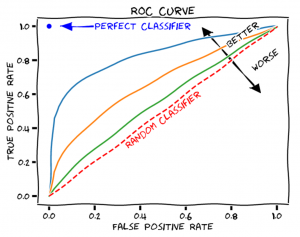
Machine learning is a powerful machine intelligence technique that can be used to develop predictive models for different types of data. It has become the backbone of many intelligent applications and evaluating machine learning model performance at a regular intervals is key to success of such applications. A machine learning model’s performance depends on several factors including the type of algorithm used, how well it was trained and more. In this blog post, we will discuss essential techniques for evaluating machine-learning model performance in order to provide you with some best practices when working with machine-learning models. The following are different techniques that can be used for evaluating machine learning …
Machine Learning Programming Languages List
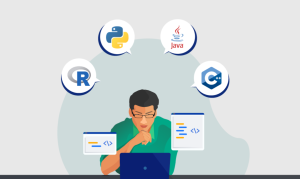
If you’re interested in pursuing a career in machine learning, you’ll need to have a firm grasp of at least one programming language. But with so many languages to choose from, which one should you learn? Here are three of the most popular machine learning programming languages, along with a brief overview of each. Python Python is a programming language with many features that make it well suited for machine learning. It has a large and active community of developers who have contributed a wide variety of libraries and tools. Python’s syntax is relatively simple and easy to learn, making it a good choice for people who are new to …
Free Machine Learning Courses from Top US Universities

Anyone looking to start learning machine learning has a plethora of resources at their disposal. However, with so many choices it can be difficult to know where to start. This blog post will outline four free machine learning courses from top US universities such as Harvard, Stanford, MIT, etc that are sure to get you on the right track. List of Online Free Courses on Machine Learning The following is a list of online free courses on machine learning from some of the top US universities: Harvard’s CS50p: Intro to Python (cs50.harvard.edu/python/2022/) MIT 6.S191: Intro to Deep Learning (https://introtodeeplearning.com/) Cornell Tech CS 5787: Applied machine learning course (https://cornelltech.github.io/cs5785-fall-2019/) Stanford’s Machine …
Data Preprocessing Steps in Machine Learning

Data preprocessing is an essential step in any machine learning project. By cleaning and preparing your data, you can ensure that your machine learning model is as accurate as possible. In this blog post, we’ll cover some of the important and most common data preprocessing steps that every data scientist should know. Replace/remove missing data Before building a machine learning model, it is important to preprocess the data and remove or replace any missing values. Missing data can cause problems with the model, such as biased results or inaccurate predictions. There are a few different ways to handle missing data, but the best approach depends on the situation. In some …
Supply chain management & Machine Learning
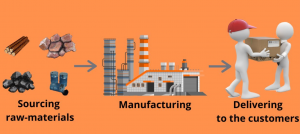
As supply chains become more complex, businesses are looking for new ways to optimize and automate their supply chain operations. One area that is seeing a lot of growth is the use of artificial intelligence (AI) and machine learning in supply chain management. There are many different applications for these technologies in supply chain management, from forecasting demand to optimizing inventory levels. In this blog post, we will explore some of the most interesting use cases for AI and machine learning in supply chain management. What is supply chain management and what are its key components? Supply chain management is the process of coordinating and controlling the flow of goods, …
Car Insurance & Machine Learning Use Cases

The car insurance industry is one of the many sectors that have been disrupted by the advent of machine learning. In the past, car insurance companies have relied on historical data to set premiums. However, machine learning / AI has enabled insurers to better predict risk and price insurance policies more accurately. As a result, AI / machine learning is transforming the car insurance industry by making it more efficient and customer-centric. In this blog, you will learn about some key car insurance use cases which can be dealt using machine learning. Detecting fraudulent car insurance claims Fraudulent car insurance claims are a problem for both insurers and policyholders. They …
I found it very helpful. However the differences are not too understandable for me